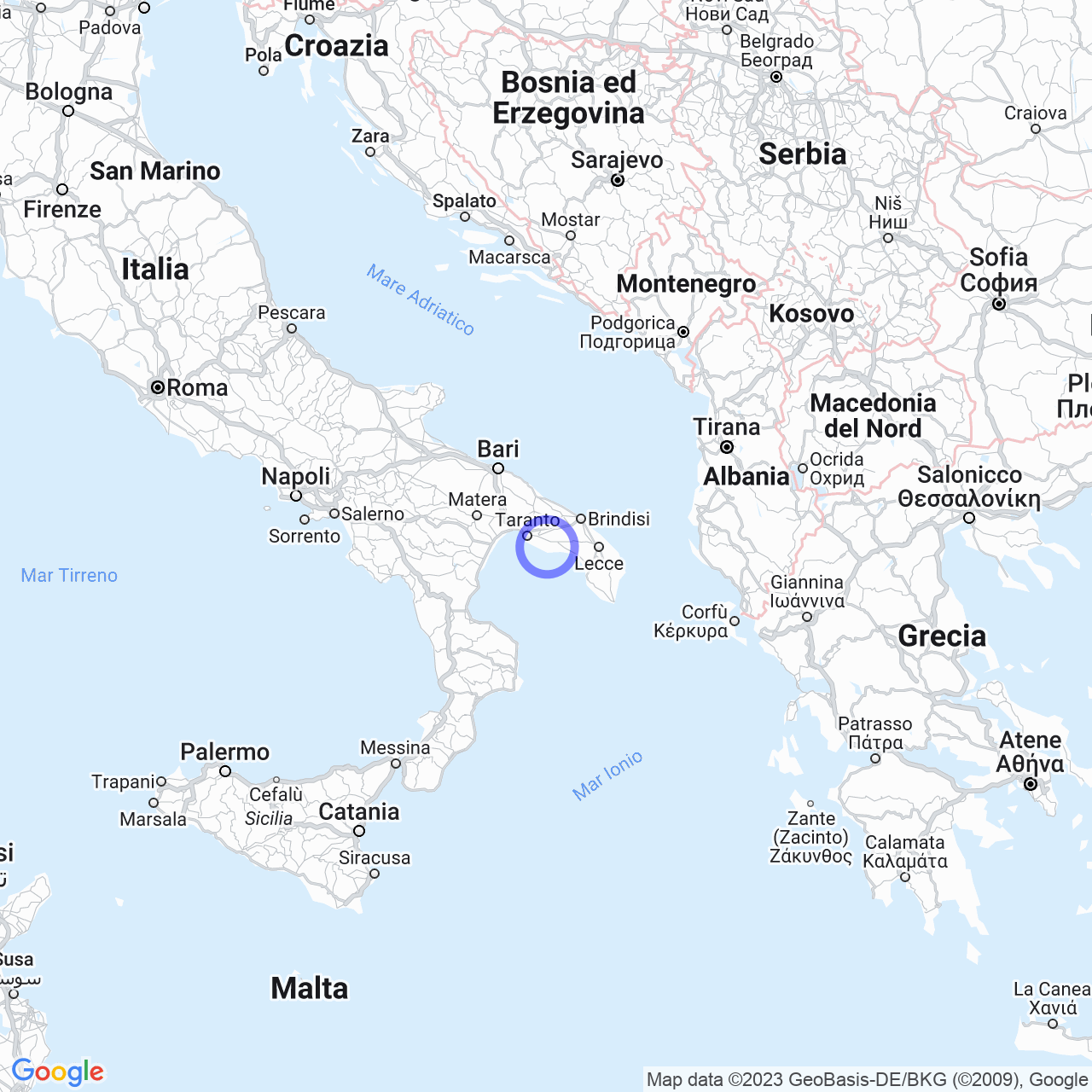Statte
Statte: Discovering the Newest Municipality in the Taranto Province
Welcome to Statte, the newest municipality in the Taranto Province! With its 12,935 inhabitants, Statte is located in the Puglia region and is only 9 kilometers away from the province's capital. In 1993, Statte became autonomous thanks to a referendum held on June 7th and 8th, 1992. The residents of Statte are called "stattesi" or "stattaruli" in the local dialect. Today, we will take you on a tour of this small town in the Taranto Province!
Physical Geography

The Village
The historic center of Statte is located in the "Canale della zingara," a small canyon where homes are carved into the rock to form numerous caves that are still inhabited today. There are also other canyons, called "lame," along which the more recent neighborhoods have formed. Unfortunately, the illegal construction during the 1960s, 70s, and 80s led to a disorderly expansion of the neighborhoods, which are now largely disconnected. Nevertheless, they have retained their charm. The neighborhoods are named “Feliciolla” and “Zappalanotte” to the south, “Del Sinni” and “Todisco” to the west, while the "Montetermiti area" extends to the northeast, up to the highest peak of the "collina ridente" (smiling hill). The San Girolamo neighborhood is also located in the northeast and is named after the church present in the area.
The Territory
The territory of Statte is characterized by a series of canyons and "lame," including the Leucaspide canyon to the west and the Mazzaracchio canyon to the southeast. The area around Statte is very green, dominated by Mediterranean vegetation and areas rich in flora. Despite the presence of Ilva, the largest and most important steel industry in Italy, Statte is a very "green" city. The illegal construction of the past has resulted in the formation of small houses surrounded by greenery, with villas of one or two floors, as well as some old nomadic and rural homes.
History
Statte has an ancient and complex history dating back to the Bronze Age. There are several testimonies from this period, such as the Bronze Necropolis, located under the main church, which still preserves many artifacts today. Statte was also part of Magna Graecia, as evidenced by the artifacts found in the area of the San Mauro sanctuary. In the Middle Ages, Statte underwent numerous conquests, first by the Normans and then by the Swabians. During the Renaissance, the development of the city led to the construction of numerous churches and palaces, many of which are still visible today.
Culture and Traditions
In Statte, the Apulian folklore is evident everywhere! Throughout the year, there are various religious and folkloric events, such as the procession of the "living dead" during Halloween night, the feast of San Vito Martire in June, where the city's patron saint is celebrated, the procession of the mysteries during Holy Week, which is one of the most suggestive in the area, and much more. Apulian food and wine tradition is well represented in Statte, thanks to the presence of several taverns and restaurants that offer local delicacies such as "carteddate," "taralli," and much more.
Economy and Industry
Statte is a municipality that is mainly based on industry and agriculture. Ilva, which is present in the area, is one of the main employers in the city, but there is also a thriving agricultural activity, thanks to the presence of numerous agritourisms and companies that produce wine, oil, and other typical products of the area.
Conclusion
Although Statte is one of the newest municipalities in the province, it manages not to go unnoticed. Thanks to its geographical position, its millennial history, its traditions, and its cuisine, Statte manages to attract a large number of visitors every year. Its natural beauties, such as the canyons, also make it one of the best places for trekking enthusiasts. In short, a destination not to be missed!
